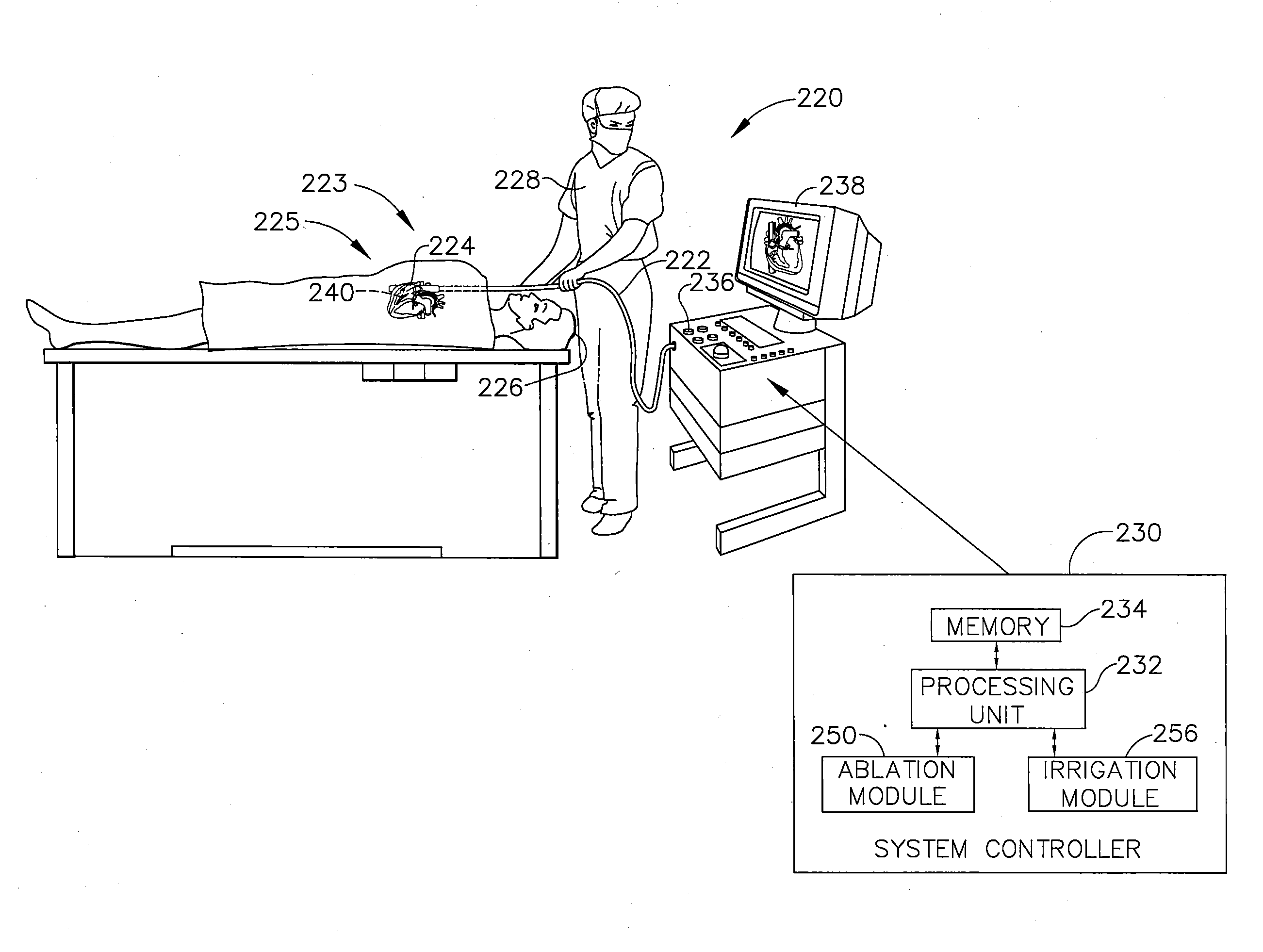Catheter adapted for direct tissue contact and pressure sensing
a catheter and tissue technology, applied in the field of catheters and irrigated ablation catheters, can solve the problems of perforation of the heart wall, unfavorable tissue damage, etc., and achieve the effect of more accurate tissue sensing
- Summary
- Abstract
- Description
- Claims
- Application Information
AI Technical Summary
Benefits of technology
Problems solved by technology
Method used
Image
Examples
Embodiment Construction
[0066]As illustrated in FIGS. 1, 2 and 3, the present invention includes a steerable catheter 10 with a distal tip section 17 that includes an electrode assembly 19 and at least one micro-element 20 having an atraumatic distal end adapted for direct contact with target tissue 22. As illustrated in FIGS. 2 and 3, the distal end may have an external portion that is exposed and protrudes distally of the electrode assembly 19 to deform tissue and create micro-depression 24 where the external portion depresses and / or sinks into the micro-depression so as to be surrounded and buried in the tissue without penetrating, piercing or otherwise breaching the tissue. Alternatively, the distal end of the micro-element 20 may be flush with an outer surface of the electrode assembly 19, as illustrated in FIG. 2A. In either embodiment, each micro-element may be configured as a temperature sensor, e.g., thermistor, thermocouple, fluoroptic probe, and the like, or electrode for sensing and / or ablation...
PUM
 Login to View More
Login to View More Abstract
Description
Claims
Application Information
 Login to View More
Login to View More - R&D
- Intellectual Property
- Life Sciences
- Materials
- Tech Scout
- Unparalleled Data Quality
- Higher Quality Content
- 60% Fewer Hallucinations
Browse by: Latest US Patents, China's latest patents, Technical Efficacy Thesaurus, Application Domain, Technology Topic, Popular Technical Reports.
© 2025 PatSnap. All rights reserved.Legal|Privacy policy|Modern Slavery Act Transparency Statement|Sitemap|About US| Contact US: help@patsnap.com



